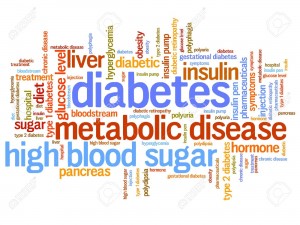What is Diabetes?
Posted on January 27th, 2016 by Andries Lodder
Diabetes is a metabolic disease which is marked by high levels of sugar in the blood. It is either caused by the body producing too little insulin, the cells being resistant to insulin or by both.
Exercise helps in the control of blood glucose levels, because in the absence of insulin, exercise will enhance the uptake of glucose.
Most of the foods that we eat are broken down into glucose, which passes into the bloodstream and is used by the cells for growth and energy. The glucose in the bloodstream is known as blood sugar. The body attempts to keep this blood sugar level constant for normal body function.
When a person has diabetes one of two things can happen to prevent glucose storage, the pancreas either secretes to little or no insulin or the cells do not respond to the insulin secreted. This causes glucose to build up in the bloodstream and eventually is passed out of the body in the urine. This build up of glucose in the blood leads to damage of the small blood vessels.
Some people may even have pre-diabetes. These people have blood glucose levels higher than normal but it is not high enough for them to be diagnosed as diabetics.
Fasting Blood Glucose (mmol/L) | Classification |
3.9 – 5.5 | Normal Glucose Tolerance |
5.6 – 6.9 | Pre-Diabetes |
>7.0 | Diabetes |
Type 1 Diabetes
- Marked reduction in the insulin produced, leading to an absolute deficiency of insulin.
- A person with type 1 diabetes has to take insulin injections or use an insulin pump in order to provide the body with insulin.
- Most often develops in children and young adults.
Type 2 Diabetes
- This is the most common form of diabetes and affects about 90 to 95 percent of people.
- It is associated with obesity, family history of diabetes, physical inactivity, older age and certain ethnicities.
- They have normal, elevated or reduced insulin levels, but the cells are unable to use the insulin to take up glucose from the blood.
Diabetes cannot be cured. The short-term goals for treatment are the stabilization of high blood sugar levels. The long-term treatment goals include the relieving of symptoms, prevention of diabetes-related complications and to prolong life.
People with diabetes should not only keep their blood glucose levels under control, but also their blood pressure and cholesterol levels.
Benefits of exercise:
- Controlled Blood Glucose levels
- Reduced body fat
- Cardiovascular benefits
- Reduced stress
- Prevention of type 2 diabetes (if pre-diabetic)
Exercise prescriptions are individualized to meet the person’s medication schedule and severity of any diabetic complication and also to the goals and expected benefits that the exercise program may hold. Always drink adequate amounts of fluids during exercise and always keep a source of rapidly acting carbohydrates available.
If you have any questions about Diabetes, don’t hesitate to contact me.
Tweet
